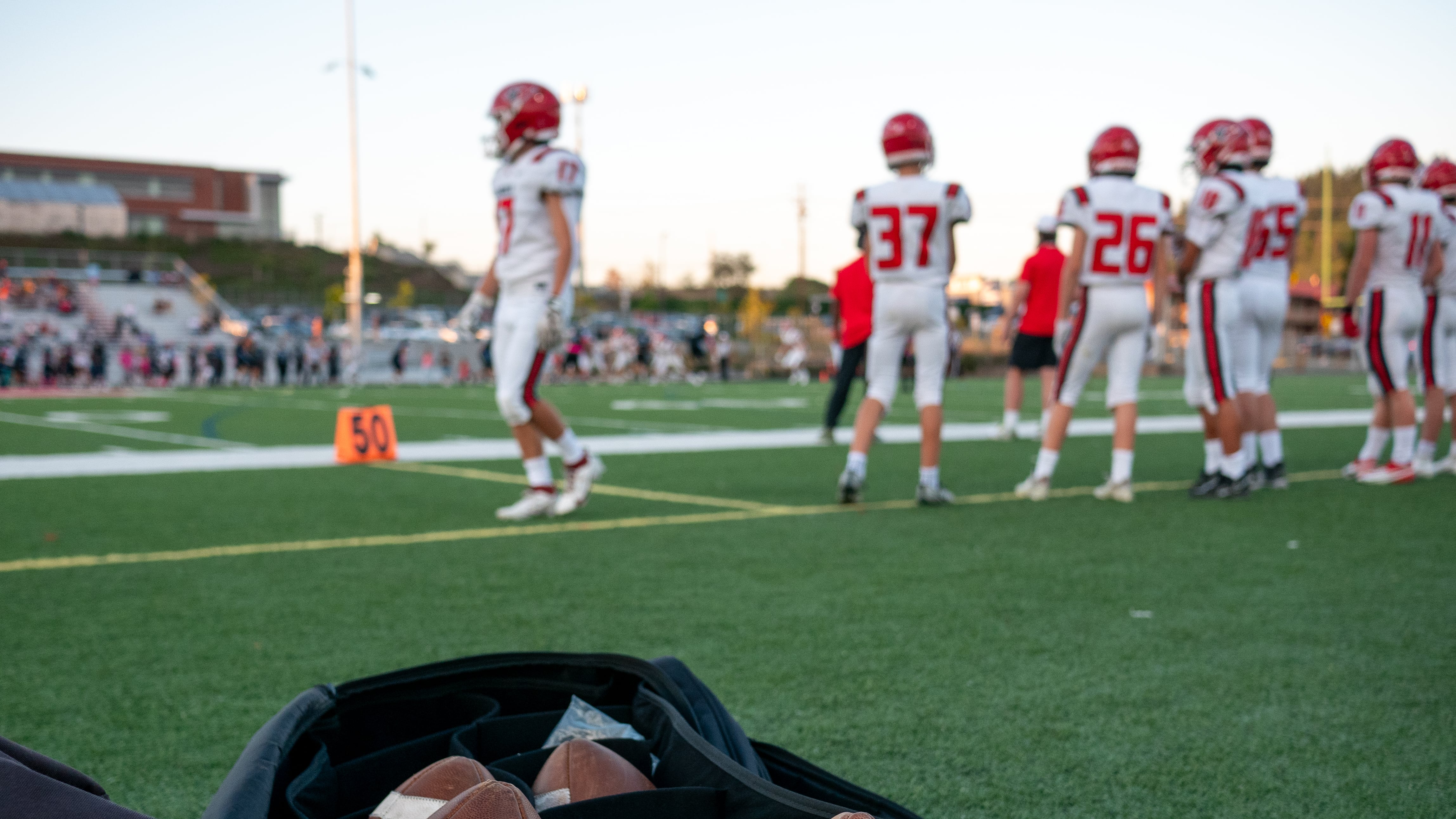Maddie Snyder is a senior at Catlin Gabel High School who covers youth sports in the Portland area from a student perspective. This story is part of a WW initiative to develop young voices in journalism.
Every teenager knows the “Friday night lights” vibe. School lets out, and every character, regardless of active storyline, prepares for the showdown. Massive banners decorate the student section. Players don their helmets. Cheerleaders fly through the air. The crowd is awash in cheers or tears.
Friday Night Lights is a 1990 bestselling book, a 2004 movie, an entertaining television series starring Taylor Kitsch…and so much more. It’s shorthand for the most distinct image of the high school experience, the weekly football game that brings everyone together in spirit and spectacle.
Even in my fourth grade classroom, the question circulating every Friday morning was, “When are you going to the game?” Friday night football games were a ritual, even for elementary schoolers. The school spirit was contagious. Even though I wasn’t the most agile kid, I joined the junior cheerleading program to feel a part of the spectacle.
But that was in Atlanta, Georgia, where I grew up. When I moved to Portland for middle school, I discovered the Friday night lights had dimmed.
Does it seem that way simply because I attend Catlin Gabel, which doesn’t have a football program? To find out, I attended two games at Lincoln and Central Catholic high schools this fall.
The difference between what I saw and what I remembered quickly became clear: All the socializing in Atlanta—the posters, the chants, the costumes—revolves around football. But in Portland, the games felt more like a subdued social gathering that just happened to unfold at a football game.
What I experienced in Georgia may still occur in Oregon, especially for the best teams and games, but it rarely unfolds in Portland with the intensity I remember. At Lincoln’s first home game in September, the stands were packed, but not necessarily with people watching football.
Lincoln senior Frances Reuland, who was enthusiastic the whole game, admitted, “I’ve watched like three plays.” Reuland was often trying to start chants, with little success, and acknowledged the crowds aren’t typically focused on the sport. She recognized, however, that the game was Cardinals’ first of the season, and mentioned that the size of the student section depends on the game.
Unpredictable attendance was also a problem raised by students at the Central Catholic game I attended in October. Although it was senior night, there seemed to be more parents and cheerleaders than students.
Senior Liberty Ridley thinks the location of the game, and cold weather, may explain the students’ lack of motivation. Central Catholic plays its home games at Hillsboro Stadium, at least 30 minutes removed from its Southeast Portland campus.
“It’s definitely not a lack of promotion. We hear about the games all the time,” she said. “I don’t want to call it laziness. I just think people aren’t interested.”
Sophomore Madeline Winter told me the student section is usually much larger than it was at the game I attended, but student attendance fluctuates a lot. When I arrived in the second quarter, Central Catholic already led Barlow 34–0, a predictable blowout that surely lowered the turnout. At more competitive games, Winter adds, only half the students are watching the game, the rest are simply hanging out in the back bleachers.
Senior Sophia Malen recalled, “Even when there are a lot of people, [the energy] kind of dies down.” Winter loves going to games but told me they would be far more fun if more students came out and pumped up the volume.
Her frustration echoed across many of the students I met. “I think people are just kind of like meh with it,” Malen said. “I’m having fun, but it would be way cooler if there were more people getting into it.”
Malen and Winter crave the hype I experienced in Atlanta, the hype that is central to the books, the movies, and the TV series. In Portland, football games are more of a social opportunity than a community obligation. You never know who will show up, screaming for the home team. Because the crowds vary, the weekly experience is uneven and often diminished.
And for the teenagers who thrill to the spectacle they attach to Friday Night Lights, it can feel like something is missing.
Winter says she’s seen a lot of videos on social media about high school football in other states: “Other schools in different states look more fun. I wish we could be like that.”
While the experience is different in Oregon, I can’t say that it’s better or worse. Of course, I miss the energy of a Friday night football game in Georgia, but I don’t miss the social pressure that I now realize was needed to create it.
Whenever I return to Atlanta for a visit, that pressure only feels more pronounced to me. It once pushed me to join a cheering program even though I knew I was not meant to be a cheerleader.
Even before I knew what a “social norm” meant, I was living one.
Many of the Lincoln and Central Catholic students I talked to wish there was more energy around Friday night lights, but I don’t think the turf is always greener on the other side. They have more social autonomy, and I wouldn’t trade that for my Atlanta football experience.

